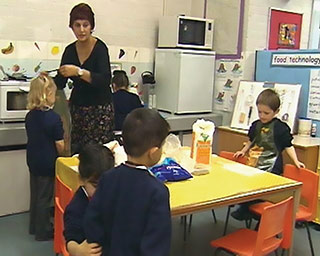2.5 The primary school workforce in the United Kingdom
In the United Kingdom, the increase in the number of other adults working alongside teachers in primary classrooms was most marked between the mid-1990s and 2012. The seeds of this development were sown when, in the 1980s, support staff were employed to support the inclusion in mainstream classrooms of children with special educational needs. Teaching assistants (both then and now alternatively called ‘special needs assistants’, ‘learning support assistants’, ‘pupil support assistants’, and other similar titles) were recruited to provide individualised help for children.
A distinctive feature of the primary school workforce in the UK is that it is predominantly female. In 2013, 87 per cent of primary school teachers in the UK were female (World Bank, 2015), a similar percentage to that found in many countries around the world, although in a relatively small number of countries (mainly in Africa) male primary teachers are in the majority. In England, a government report found that, in November 2013, 92 per cent of teaching assistants were female (DfE, 2014, p. 6). This report did not distinguish between teaching assistants working in primary and secondary schools, but based on the students who have studied courses for teaching assistants at The Open University, the percentage of female teaching assistants in primary schools may be even greater.
As the effects of ‘workforce remodelling’ played out within the UK, the caring element of teachers’ roles was increasingly devolved to teaching assistants and other support staff. Speaking back in 2003, Heather Wakefield, head of local government liaison at the public service trade union UNISON at the time, emphasised the link between caring work in the public sector and the recruitment of a predominantly female workforce. She suggested that a woman’s role in the household and in the family was being ‘imported’ into the workplace where it is of value in a number of ways, not least in terms of a woman’s supporting and caring abilities (Wakefield, 2003). She also made the point that this kind of ‘caring work’ had traditionally been poorly paid and accorded low status by employers. From your own experience and knowledge of support roles in primary schools, how far do you feel that the nature of this work and the status accorded to it as described by Wakefield, are still in evidence today?

